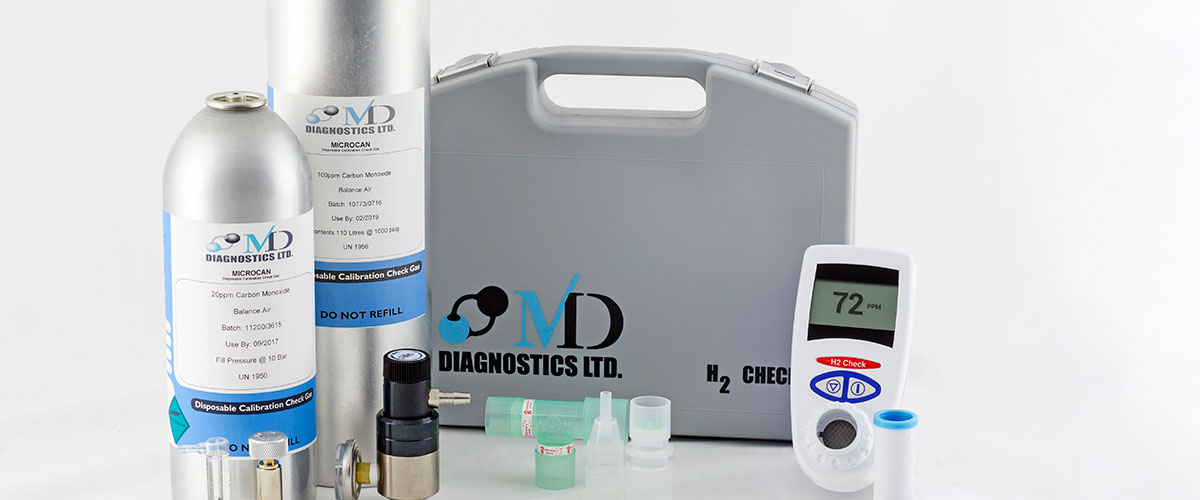Lactose is a sugar found in milk. Unless it gets changed into glucose it cannot be absorbed into the body. This change happens when the Lactose passes through the stomach into the small intestine and comes into contact with Lactase enzyme. If there is not enough Lactase present, the Lactose cannot be broken down, and this in turn leads to Lactose Intolerance.
Building on experience gained over many years, the H2 Check is an easy house hand held device for the simple detection of Hydrogen on the breath. A single breath test will display H2 results in PPM.
The H2 Check can be used on all age groups and types of patients. A face mask can be used on patients that are not able to comply with tidal breathing through a standard cardboard mouthpiece.
H2 Check

Lactose intolerance H2 Breath Test instrumentation

How is the test performed?
After measuring the basal fasting value (0 min), the amount of H2 in the exhaled air is measured at 30 min intervals over the course of at least 2 hours, plus an additional measurement at 15 min after the administration of the substrate.
Therefore testing is as follows:
- Baseline reading (1st breath test)
- Administration of substrate
- Breath test after 15 minutes – (2nd breath test)
- Breath test after 30 minutes – (3rd breath test)
- *After 45 minutes – (4th breath test (useful if small intestinal bacterial overgrowth syndrome is suspected (SBIOS)
- Breath test after 60 minutes – (5th breath test)
- Breath test after 90 minutes – (6th breath test)
- Breath test after 120 minutes – (7th breath test)
If the patient is symptomatic with bloating, stomach cramps or diarrhoea it is useful to continue the test for a further 2 breath tests at 150 minutes and 180 minutes.
What is a positive result?
An increase in hydrogen concentrations of more than 20 ppm above the basal value is considered to be a positive test result.
A significant H2 increase and the appearance of symptoms, both occurring at about 60 min after starting the test, are considered as a diagnosis of – intestinal intolerance of the test substance.
What is a negative result?
There is no significant increase in hydrogen levels, i.e. readings vary by less than 5 ppm above or below the basal value, AND there are no symptoms.
If clinical complaints occur but are not accompanied by an increase in H2 levels, a lack of H2 production (non- H2-producer) should be considered. In order to make a safe diagnosis of non-H2-production, a lactulose test must be carried out. If a lactulose load still does not produce an increase in H2 levels, the subject is very likely to be a ‘non- H2-producer’.
False negative results
False-negative results may occur due to a longer oro-cecal transit time, i.e. it is possible that the test was finished before a measurable increase in H2 levels could be established. If a slow transit time is suspected (in cases where patients tend to complain about constipation with very rare bowel movements) it is reasonable to take additional readings after 150 and 180 min, respectively.

